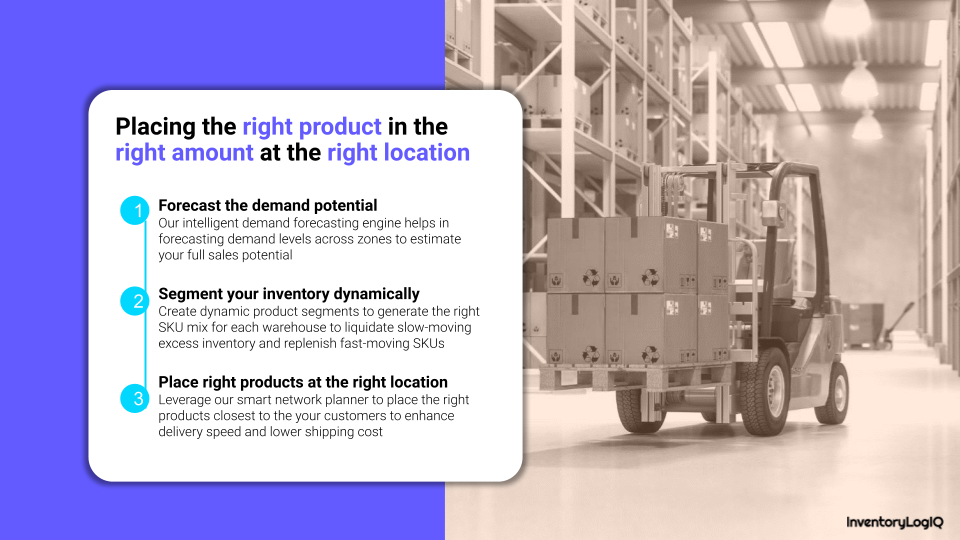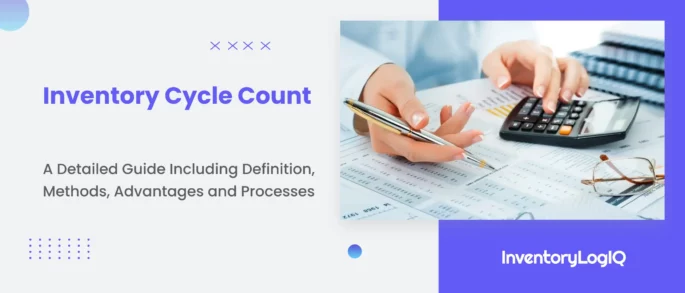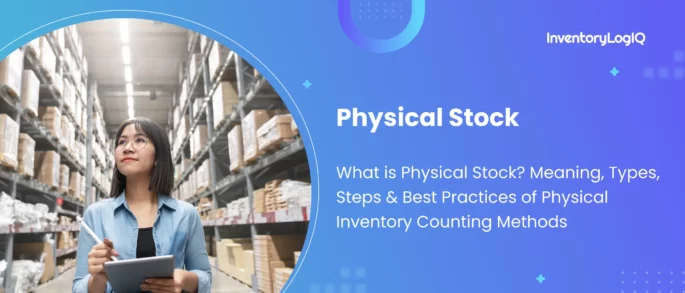What is a Stockout? Reasons, Impacts and 5 Ways to Prevent Out of Stock Situations in 2023
Customers frequently come to your online business looking for a certain item to buy on the spot. They directly search for the product on various selling platforms. You can take advantage of customers that are currently visiting your store by making sure that all products are in stock. However, if the product is often out of stock, it may significantly reduce prospective sales, dissatisfied clients and eventually impede the expansion of a business.
Stockouts have a negative effect on a customer’s experience, so you should put all of your efforts into preventing them. Stockouts cause disappointment for both you and the buyer who is willing to spend their money and may urgently require your goods. It ultimately results in a loss of revenue and may harm the reputation of your brand. In this blog, we will learn all about out of stock situations and how we can prevent them to provide a better customer experience and never disrupt the revenue chain.
What is a Stockout?
A stockout, also called out of stock, refers to a shortage of a particular inventory item which leads to sellers not being able to fulfill orders for that item. Stockouts result in not only a loss of revenue but also customers. If there is no indication of when the item will be back in stock and available for purchase, it can be very detrimental to a company.
A stockout occurs when demand is more than supply and there is not enough regular inventory or safety stock to fulfill all orders. A stockout may also result from production process interruptions or delays in the supply chain. Due to the greater likelihood that customers may go elsewhere for the items they need, a stockout increases the risk of lost sales. As a result, customer relationships may suffer over the long term.
Reasons for Out of Stock Occurrences in 2023
Poor Inventory Management
Inventory management is a crucial function for every eCommerce seller. You have a lot of things to take care of while managing inventory. Different sellers manage their inventory differently. Some use FIFO valuation method or FILO for inventory accounting purposes and some use high-end inventory management systems while some use manual counting of inventory to keep track of any changes that are made. Poor inventory management can result in frequent stockouts. Good inventory management can result in better calculations, forecast demand for future purchases and automate reorder requirements.
Inaccurate Count of Inventory
Inventory items should have a report on the count so that at any time, you will have an idea of the number of products you have in storage and how many orders you can fulfill. Sellers have inventory stored in multiple different locations frequently and those who do not maintain adequate records of their inventory frequently have out of stock situations occur, which leads to an inability to fulfill orders. To avoid this, they can invest in an inventory management system or have frequent manual counts of inventory. You can know more on inventory accuracy here.
Inadequate Forecasting and Inaccurate Reporting
Business is all about forecasting and taking risks. If you are not forecasting demand to be able to supply products and fulfill orders accordingly, you will lose profit and sales. If you order increased inventory as compared with your demand, then you will be left with wasted stock which may cost you additional expenses to store for a long period as it can become obsolete. Conversely, if you are under order compared to your demand, you are at risk of facing stockouts.
Suggested Read: Learn more about Inventory Forecasting here.
Incompetent Supply Chain
An incompetent supply chain will never deliver your inventory on time and you will face multiple problems, including stockouts, regularly. With them, you have a risk of supplying damaged products to customers, which will always end with customer dissatisfaction, negative feedback, and a loss of business.
Delays Caused by Suppliers
Especially during seasons of high demand and if you rely mainly on one supplier, they can be put under immense pressure to deliver inventory in a short duration of time which can lead to accidents, delays, and mistakes. This leads to you not being able to get your products on time which can lead to out of stock situations.
Lack of Experience and Expertise
Purchasing is a very crucial task for a seller to select the right inventory in an adequate amount so they can avoid stockouts and reorder the correct amounts when required. A new eCommerce seller may not forecast the actual upcoming demand and can also lack the resources and experience to know what to do in difficult situations.
How Can a Stockout Harm Your Business?
Loss in Sales
You miss out on a sale when you do not have what a customer is seeking. Lost customers result in a loss of revenue because not having enough stock on hand can result in not being able to fulfill orders. You are in business to make money, not to lose money. Stockouts are primarily the result of ineffective inventory management. Proper inventory counting and demand forecasting are crucial in order to prevent stockouts.
Negatively Affects Branding
Customer satisfaction may make or break your eCommerce firm because poor customer satisfaction has a negative effect on customers and reflects in their reviews. Customers may submit unfavourable reviews on your website or other review sites if they frequently notice that your product is sold out, which will damage the reputation of your company. These reviews are visible to potential buyers, who can consider your company unreliable. Your bad review gives companies that sell comparable items an advantage since it gives them knowledge of the areas where your brand falls short, allowing them to take advantage of it.
Weakens Customer Loyalty
How much would it cost to get one new consumer to your online shop? If you run out of an item, not only will conversions drastically decline because there won’t be anything to buy, but the consumer is also likely to buy from a competitor who has the item in stock. Additionally, they might make future purchases from competitors. Stockouts can ruin a customer’s purchasing experience, making it unlikely that they will ever come back to your store again.
Without a doubt, stockouts can have a significantly negative impact on future business expansion. Some customers are eager to sign up for back-in-stock notifications if an out of stock item is difficult to get delivered. This is an excellent tactic to notify and nudge customers to make purchases when things are back in stock. Even so, this does not ensure that any future sales will be converted.
5 Ways to Prevent Stockouts in 2023
Use Inventory Management Software
It is an all-in-one solution for inventory management for an eCommerce seller. It keeps track of all your inventory items so that you cannot get confused about what you have and what you don’t have. It optimizes the inventory space and utilizes it in the best possible way. It also enables automated counts, updates changes in real-time and provides insights into various aspects of inventory, across multiple fulfillment centers.
Keep Safety Stock
Keep extra inventory on hand, as this is another simple approach to guarantee that you will never run out of essential supplies. This is referred to as “safety stock.” Safety stock increases your tolerance for supply chain disruptions but it can also be expensive, increasing your inventory carrying costs and reducing the amount of productive inventory you have on hand.
Forecast Future Demand
Companies can reduce the chances of a stockout by strengthening their capacity to forecast customer demand in addition to better supply forecasting. Modern demand forecasting is essential to preventing demand from exceeding supply and causing a stockout, especially around the introduction of new products.
Calculate Inventory Replenishment Time
If customers know that an out of stock product will soon be back in stock, they may wait. If you routinely monitor the inventory levels and conduct stock replenishment to replenish products when levels are low, you can prevent stockouts and, if stockouts do occur, you can more readily let the customer know when the item will be available.
Automate Reordering
In the era of automation, we need to gel with the market and its strategy. Most retail chain stores use the Internet of Things(IoT) to keep a record of inventory and reorder so that they can track their inventory wherever they are. It calculates reorder levels and accurately tells a seller when they should place an order and at what time they will get it.
Conclusion: How to Prevent Stockouts with InventoryLogIQ
Stockouts can have immensely negative consequences for businesses in terms of lost sales and loss of revenue. There are many ways to prevent stockouts before they occur and with the right approach to inventory management, they can be negated before they even happen. By using technology, enhancing forecasting, optimizing lead times and preparing for unexpected spikes in demand, companies can ensure that their products are always in stock and ready to meet customer demand. Partnering with a renowned inventory management platform like InventoryLogIQ can get you access to all the facilities you need to avoid stockouts.

InventoryLogIQ is one of India’s premier inventory management companies that uses an abundance of technology to help your business run as efficiently as possible. We have a custom OMS that can forecast demand, provide the adequate MOQs and EOQs that are needed, set replenishment triggers when the quantity of a product is running low and provide real-time updates to inventory levels, across multiple fulfillment centers and 20-plus eCommerce selling platforms.










